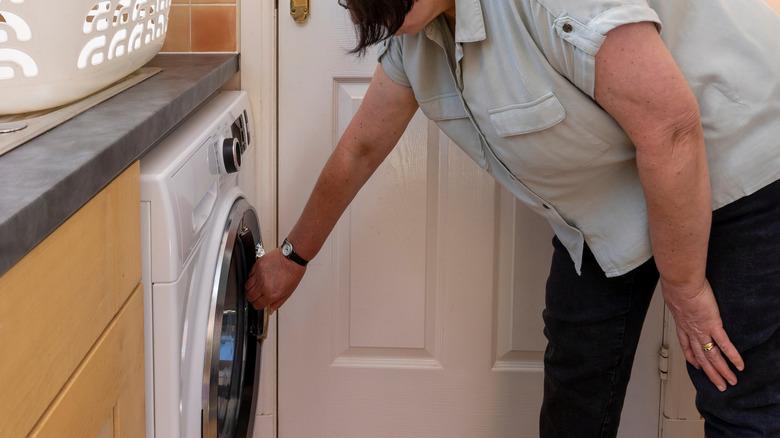Why You May Want To Think Twice Before Buying A Front-Load Washer
We may receive a commission on purchases made from links.
If your old washing machine is beginning to look a little worn down, you may find yourself dreaming about what your next one might look like, even if you have prolonged its life with good maintenance tips. And from settings and size to make and model, there are plenty of aspects to consider. But what about making the switch to a front-load washer? The New York Times comments that washing machines with a door on the front, not the top, are actually more effective at removing tough stains due to their gravity-driven spin cycle.
However, while a new and improved way of cleaning laundry sounds appealing, there are some lesser-known drawbacks to these types of washers that are important to consider. One of the most common issues that arises with this type of machine is mold. Due to the drum being situated on its side, water, dirt, and grease can puddle in the bottom, resulting in mold or even a rotten egg smell in your machine. This can often be prevented, however, by leaving the door of the machine ajar to allow it to dry out between cycles and by cleaning it regularly. National Geographic recommends running the machine through a full cycle, then using a vinegar or bleach solution to wipe down the inside, outside, and gasket (the rubber seal around the door that keeps water from leaking out).
One common drawback to front-load washers
Another issue with front-load washing machines is positioning. With the door on the front, loading and unloading the machine forces you to do a lot of bending over, whereas a top-load washer enables you to simply drop the clothes in and pull them out. This problem can be mitigated with the purchase of a pedestal, which is usually sold separately from the washer itself. Keeping in mind the significant weight of these appliances, particularly when full of wet clothes, it is best to use a stand designed for the purpose to ensure that it will be able to hold the weight of the machine.
In addition, front-load washing machines are known for having a more violent spin cycle, which can not only be loud but can also cause the machine to wobble. Any pedestal placed underneath, therefore, needs to be level in order to balance the front-load washing machine and avoid it falling to the side or toppling off. Choosing a purpose-built stand does not necessarily limit your options, however. Plenty of models, such as this GDLF one, come with the benefit of additional storage, as well as a pull-out drawer that enables you to easily place laundry into a basket at waist height, with no bending required.

